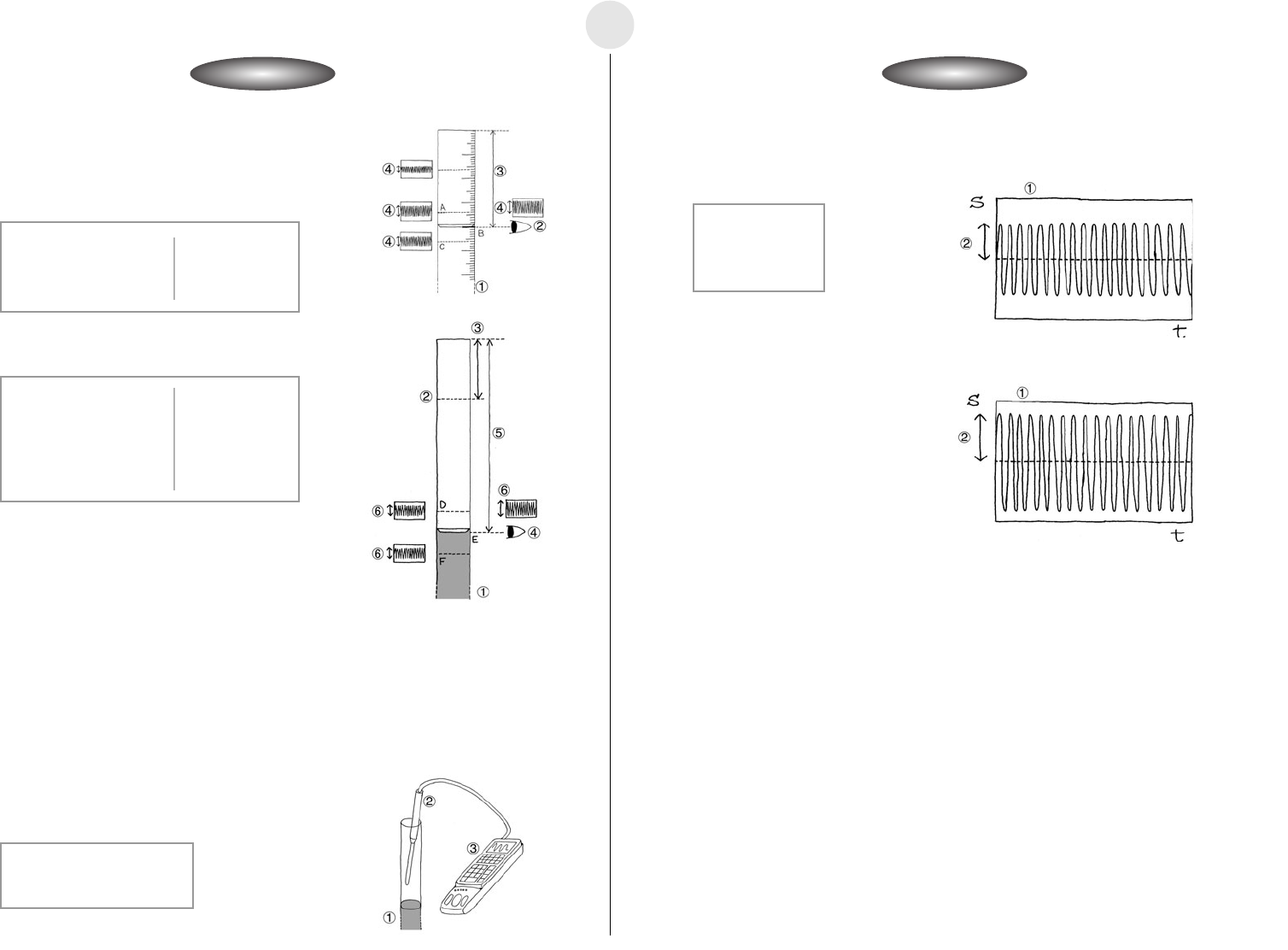
20020601
English
Activity: Operating the EquipmentActivity: Operating the Equipment
MeasurementMeasurement
2-7-2
í Measuring the Resonance Points
u Record the sound on the Audio Measurement Setup,
display the waveform, and observe the amplitude.
u Lower the water level, and find the point of maximum
amplitude.
u Lower the water level more, and find the next point of
maximum amplitude.
u Repeat the measurement three times and calculate
the average of the results.
u Substitute the average values of L
1 and L2 into the
theoretical expression and calculate the velocity of
sound.
í Measuring the Temperature of the Air Column
u Use the Temperature Measurement Setup to measure the temperature and then display it.
u Substitute the measured temperature values into the expression and calculate the
velocity of sound. Next, compare the results with the previously obtained value.
v
= 331.5 + 0.61T
v(m/s) : Velocity of Sound
T(°C) : Air Column Temperature
55555555555555555555555
5555555555555555555555
5555555555
Other Things To Do
5555555555
í Calculator Operation
u Use the Audio Measurement Setup to record the sound and display the waveform.
u Find the applicable program in the Program Library (P.2-16-2), input it into your calculator,
and then run it.
Waveform at Water Levels A, C, D, and F
u Confirm that amplitude is at its maximum
for water levels B and E.
Waveform at Water Levels B and E
u Use the temperature probe to measure the temperature and then display it.
u Find the applicable program (Charles’ Law) in the Program Library (P.2-16-1), input it into
your calculator, and then run it.
1 Glass Resonance Tube
2 Resonance Point 1
3 L
1
4 Sound Wave Amplitude
u Repeat the experiment using a different frequency, and compare the difference in
resonance points and sound velocity.
u Use FFT analysis to determine the frequency at each water level, and compare the
results with the sound source frequency.
u Substitute the observed velocity into the theoretical formula and calculate the open-
end correction value.
u Investigate what you need to multiply the open-end correction value in order to
obtain the inside diameter of the resonance tube.
u Perform the activity with a glass tube of a different diameter and find out how the
open-end correction value is affected.
1 Glass Resonance Tube
2 Resonance Point 1
3 L
1
4 Resonance Point 2
5 L
2
6 Sound Wave Amplitude
1 Waveform
2 Amplitude
S:Sound Volume
t(s):Time
1 Glass Resonance Tube
2 Temperature Probe (CH1)
3 EA-200
A: Water Level A
B: Water Level B
C:Water Level C
D: Water Level D
E: Water Level E
F: Water Level F


















